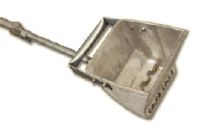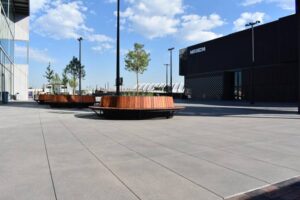Sustainable design is a big part of what makes a building green – especially in terms of earning LEED points – but sustainable construction techniques can add a few points and can also prove to an owner or designer that your company is serious about the issue. Simple decisions you make and little things your workers do, such as protecting the existing landscape, recycling or reusing materials, and choosing the right materials, can impact the site and the building for years to come.
To help contractors make their site construction operations more sustainable, the U.S. Department of Defense has published the Field Guide for Sustainable Development. The document is available as a free pdf at the Web site of the National Institute of Building Sciences’ Whole Building Design Guide, or you can buy it in a very nice spiral-bound format from the Design-Build Institute of America.
To make the guide easy to use, the authors at the Partnership for Achieving Construction Excellence at Penn State University laid it out in a matrix format. There are 10 chapters dealing with various categories in building construction, such as procurement, recycling, construction technologies and indoor environmental quality, where wise decisions can lead to reduced impacts. Within each of these 10 chapters are 15 sections that represent phases of a project, from demolition to foundations to interior construction to finishes.
The concept of the Guide is that a manager of a specific project might focus on all sections within one chapter, while a practitioner of a specific trade might focus on a specific section in every chapter. For example, during the procurement phase, the project manager might review the entire procurement chapter, while a decorative concrete contractor might want to check out the guidance on interior construction (Section 9) within each of the 10 chapters. Using the second method, you would find that Section 9 in Chapter 3, “Material Selection,” advises you to always use low-VOC sealants, while Section 9 in Chapter 5, “Recycling,” recommends that you require subcontractors and suppliers to use on-site recycling bins and place those bins in convenient locations.
You’re likely thinking that’s pretty much common sense, and of course you’d be right. But that’s true of most aspects of sustainable design and construction, and we all know how common it is to find workers who seem to have missed out on their share of common sense.
Probably the best way to instill a sustainability mindset in your workers (and maybe even in yourself) is education. This little book works well as a resource for toolbox talks, since each section takes only a few minutes to review. Using the Guide as a reference, let’s look at a few on-site activities where you could help improve the building’s green aspects.
Chapter 4, “Waste Prevention”
- Replace disposable materials with reusable materials as much as possible.
- Use salvaged materials whenever possible.
- When building temporary on-site structures, use screws instead of nails to facilitate disassembly.
- Provide crews with positive reinforcement (pizzas, hats, etc.) to encourage waste reduction.
- Set up central cutting areas to keep scrap in one place for possible reuse.
- Set up stockpiles of reusable scrap materials.
- Pour leftover concrete in chunks that can be used as fill.
- Recycle, reuse or sell any leftover rebar.
Chapter 10, “Indoor Environmental Quality”
- Don’t allow smoking inside the building.
- Turn off the building’s HVAC system during operations that could generate dust – this keeps dust out of ductwork, fans and filters.
- Use integral dust-collection systems on grinders, saws and polishers.
- Provide walk-off mats inside dust-control areas.
- Make sure below-slab vapor barriers are intact and sealed at joints and penetrations. (This will help prevent mold and mildew.)
- Schedule application of any toxic chemicals before installation of materials that absorb chemicals, such as drywall or carpet.
- Use vacuums instead of brooms to reduce dust.
- Use a dehumidifier to control moisture during wet operations.
Again, most of these are things you probably do already and that are likely to actually save you money. Throughout the Field Guide, there are lots of other tips on sustainable practices that you can implement on a job site. Many of these may seem inconsequential, but it all adds up. The bottom line is to develop a sustainability policy for your company that is tailored to your operations and to submit it along with your bids. In tough times like these, that may add up to a few extra jobs and keep your company in the black.
The Field Guide for Sustainable Development is free online courtesy of the National Institute of Building Sciences Whole Building Design Guide: www.wbdg.org/ccb/COOL/fieldg.pdf















